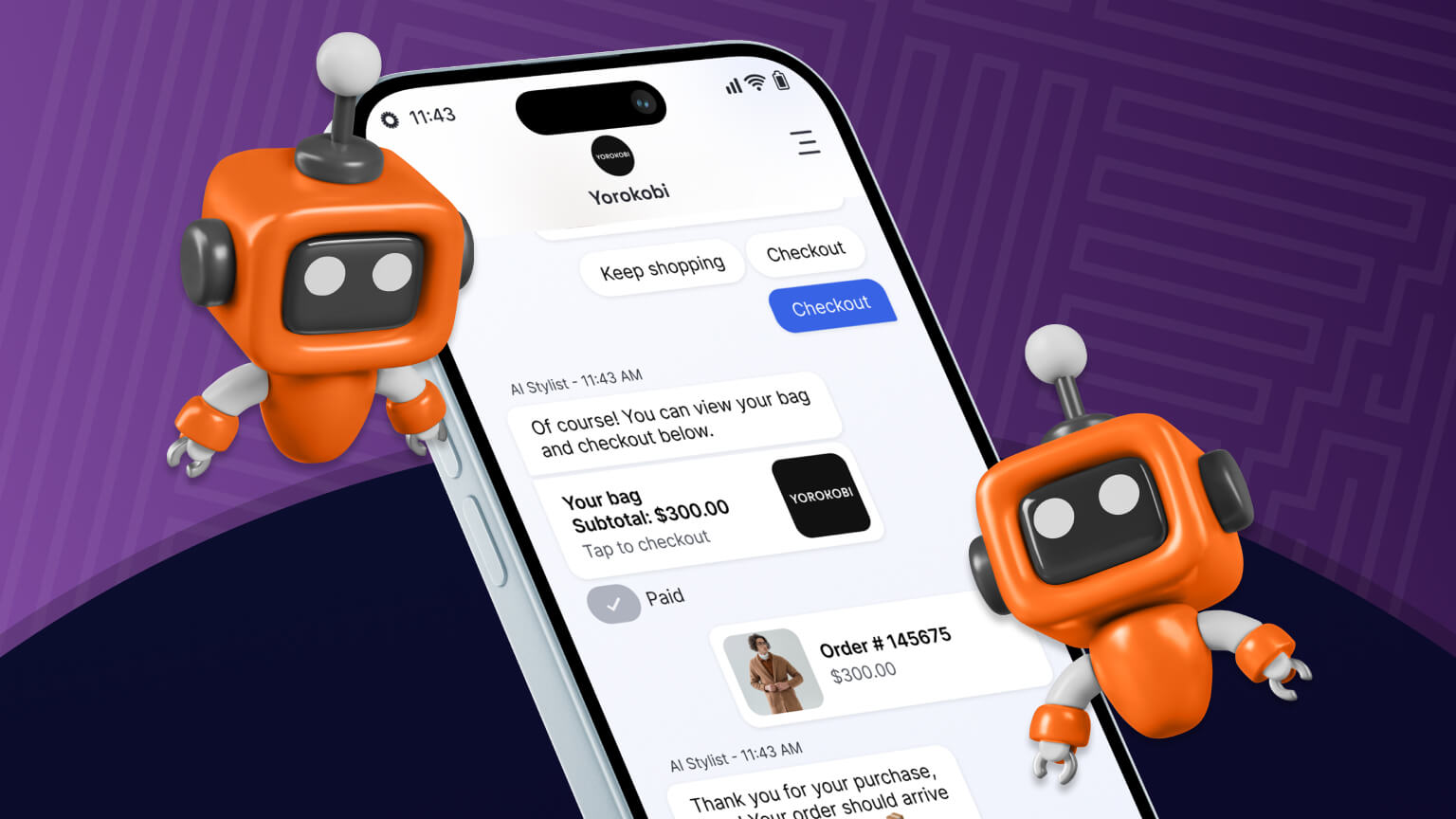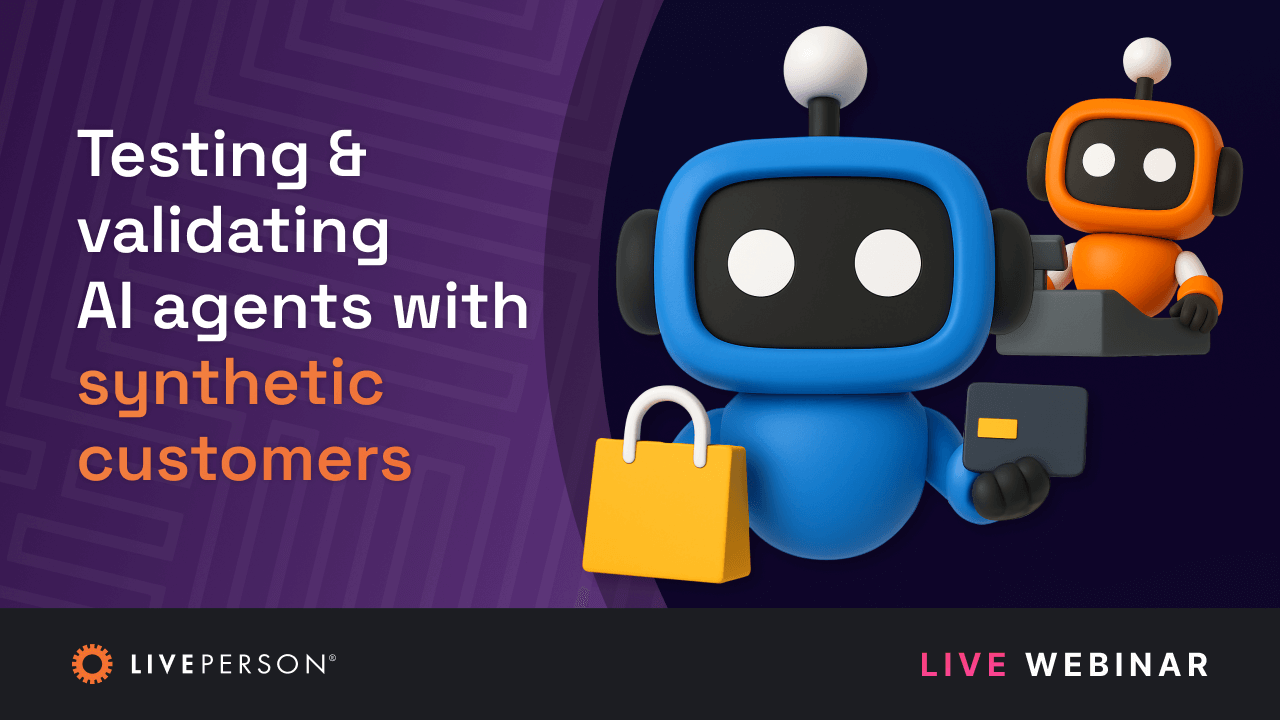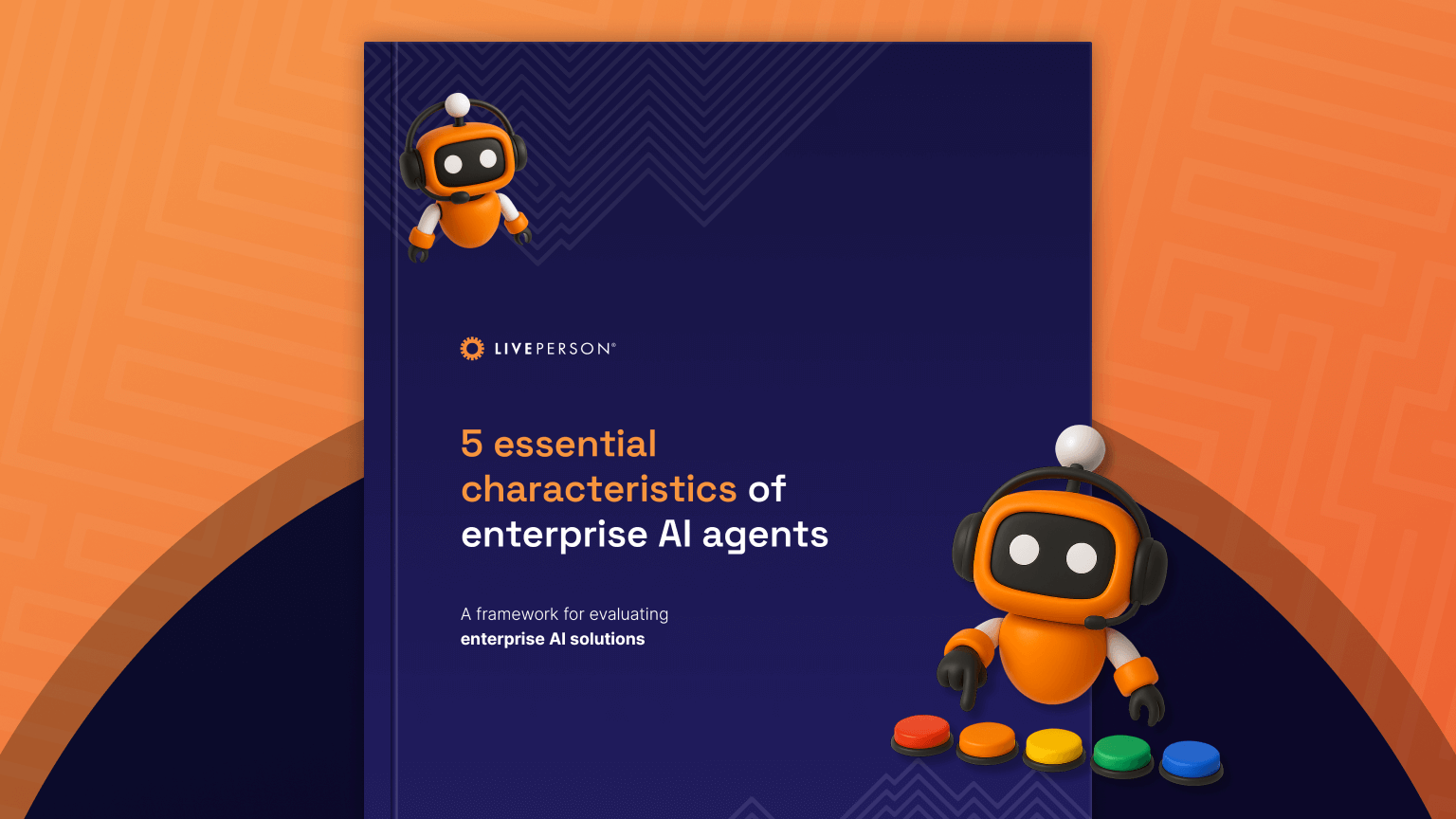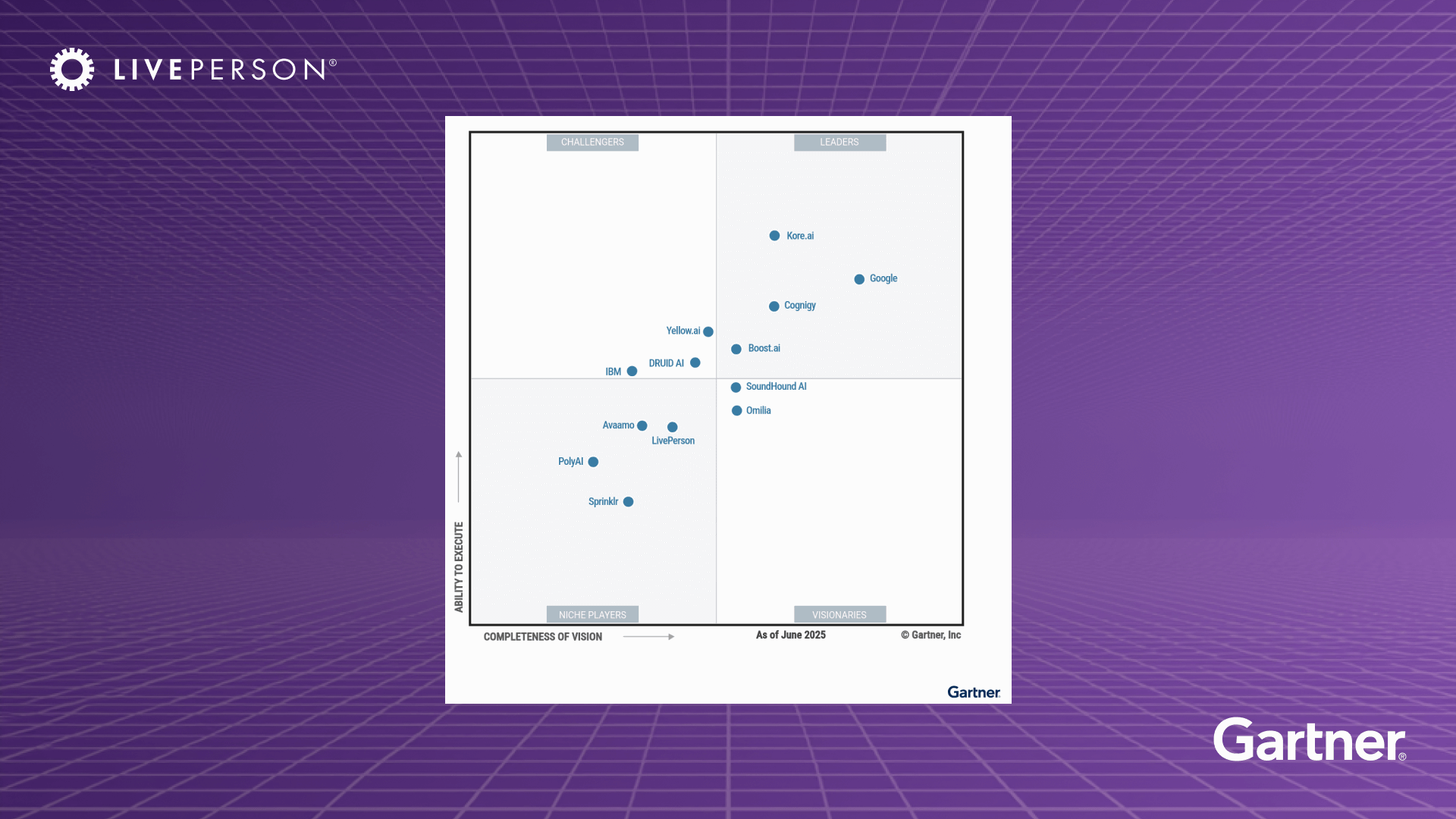article
Top 5 chatbot use cases for sales teams: converting leads with AI
May 20, 2025 • 5 minutes

For today’s sales teams, every minute counts. Whether you’re in B2B, retail, finance, or healthcare, your users want and expect quick and personalized buying experiences.
Enter AI agents and AI chatbots — technology that automates and scales sales processes while delivering outstanding customer service across channels. From qualifying leads to closing deals without human intervention, the following chatbot use cases explore how these intelligent virtual assistants help sales teams drive higher conversion rates and free up agent time for relationship building.
What is sales automation?
Sales teams are drowning in busywork. Sales automation software and tools throw them a lifeline, using tech and artificial intelligence to handle time-consuming, repetitive sales tasks that eat up a sales rep’s day.
When it comes to conversational AI and generative AI tools, sales process automation really shines. With LLMs and natural language processing and understanding, brands can create AI sales agents that actively jump into conversations with clients and customers in ways that feel personable. These chatbot use cases can include engaging users, moving them along the sales funnel and collecting customer feedback and data without the need for human intervention.
Top 5 chatbot use cases for sales teams
Here’s more on how AI tools can help sales teams generate, qualify, and convert leads.
#1 Lead generation and qualification
Sales chatbots can capture and qualify leads at the same time. They engage website visitors in real time, offering information while collecting contact details and qualification data — creating a more interactive customer experience than static forms.
For example, chatbots generate leads by answering customer queries or initiating conversations on a site to convert anonymous visitors into leads. After capturing leads, they can ask questions to figure out your user’s needs, budget, and timeline. Based on responses, the AI can score leads and route qualified prospects to the appropriate sales team member.
We saw success in this area with Open Universities Australia (OUA). It implemented LivePerson’s generative AI agents for qualified leads and achieved a 3x increase in lead qualification rates compared to their previous self-service approach.
#2 Direct sales automation tools
Today’s buyers expect personalization at every touchpoint. AI chatbots excel at data analysis and analyzing customer behavior to make relevant product recommendations. By asking targeted questions about the prospect’s needs and preferences, chatbots can suggest the most appropriate solutions from your catalog.
David’s Bridal provides a compelling chatbot example with Zoey, their AI sales agent. When brides express interest in purchasing, Zoey transforms into a virtual bridal consultant, checking dress availability, processing orders, scheduling fittings, and managing delivery updates — providing this excellent customer service all through messaging. In the first few weeks, Zoey generated $30,000 in dress sales through fully automated transactions without a human ever needing to step in.
#3 Cross-selling and upselling
AI chatbot use cases aren’t just for initial sales pipeline — they’re also powerful tools for expanding customer value. By analyzing purchase history and behavior patterns, chatbots can identify opportunities to suggest other products or upgrades at exactly the right moment in the customer journey.
They also let you re-engage existing clients for upselling and cross-selling without spamming them. Proactive messaging allows teams to reach out at strategic moments with personalized recommendations based on customer data.
Think about an electronics retailer that sends you a message about compatible accessories right after you buy a new laptop — that’s the kind of timely, relevant cross-selling that AI can handle automatically, boosting average order values while creating a helpful customer experience.
#4 Customer engagement and follow-ups
To make your chatbots truly effective at customer engagement and sales tasks, you need good integrations. LivePerson’s Integration Hub connects your chatbots with the systems where your customer data lives. With customer relationship management integrations like Salesforce, Microsoft Dynamics, NetSuite, SugarCRM, and Zendesk, your chatbots can access and update customer data directly, enabling truly personalized conversations.
Sales teams can also leverage integrations to support more sales and customer satisfaction by reminding customers about their carts, reducing cart abandonment with helpful chats if they seem stuck on the checkout page, sending order status updates via SMS for business or WhatsApp, and delivering automatic payment reminders for outstanding invoices. These chatbot use cases help maintain engagement and recover potentially lost opportunities.
#5 Objection handling and FAQs
Every sales process encounters objections and repetitive questions. AI sales agents can be trained to recognize common objections and provide tailored responses that address customer concerns. Whether it’s questions about pricing or product capabilities, AI can give people instant, brand-approved answers from your knowledge base, for example.
This chatbot use case ensures consistent messaging across all customer interactions, while allowing human sales reps to focus on more complex or unique situations that require a personalized touch.
How to create an automated sales funnel with chatbots
Ready to build your own AI-powered sales machine? Here’s how to get started:
- Map your customer journey
Before you hit the gas, take a good look at your current sales process and customer experience. Where are the bottlenecks? Which parts feel like pulling teeth? Focus on those high-volume, repetitive interactions that don’t necessarily need the human touch. Those are your automation candidates to boost productivity.
- Set clear objectives
What’s your end game: More leads? Faster qualification? Higher conversion rates? Get clear on your sales automation goals before you start building. Your objectives will guide everything from conversation design to which metrics you’ll track.
- Choose an automation platform
Look for a platform that will help you deliver highly personalized sales and customer support conversations. You’ll want intent recognition capabilities to identify exactly what prospects are looking for, a chatbot builder and generative AI tools for creating natural dialogues without coding, and conversational intelligence tools for insights to continuously improve performance. And don’t forget about integrations — your chatbots need to talk to your existing systems to create truly seamless experiences.
- Test, measure, and optimize
Monitor your results and use what you learn to make your chatbots smarter over time. With LivePerson, you can do this easily from the Report Center, which consolidates conversational data from agents and bots to measure your set objectives. This way, you’re optimizing based on data-driven insights.
Embrace the future of sales with AI agent and chatbot use cases
Conversational AI isn’t just about saving time — it’s about having smarter, more helpful conversations that actually nudge people toward clicking that ‘buy’ button. With sales automation and AI sales agents, you’ve got the tools to engage, support, and even complete transactions — all in the same chat or asynchronous message. It’s a better customer experience and a faster path to revenue for your sales team.




